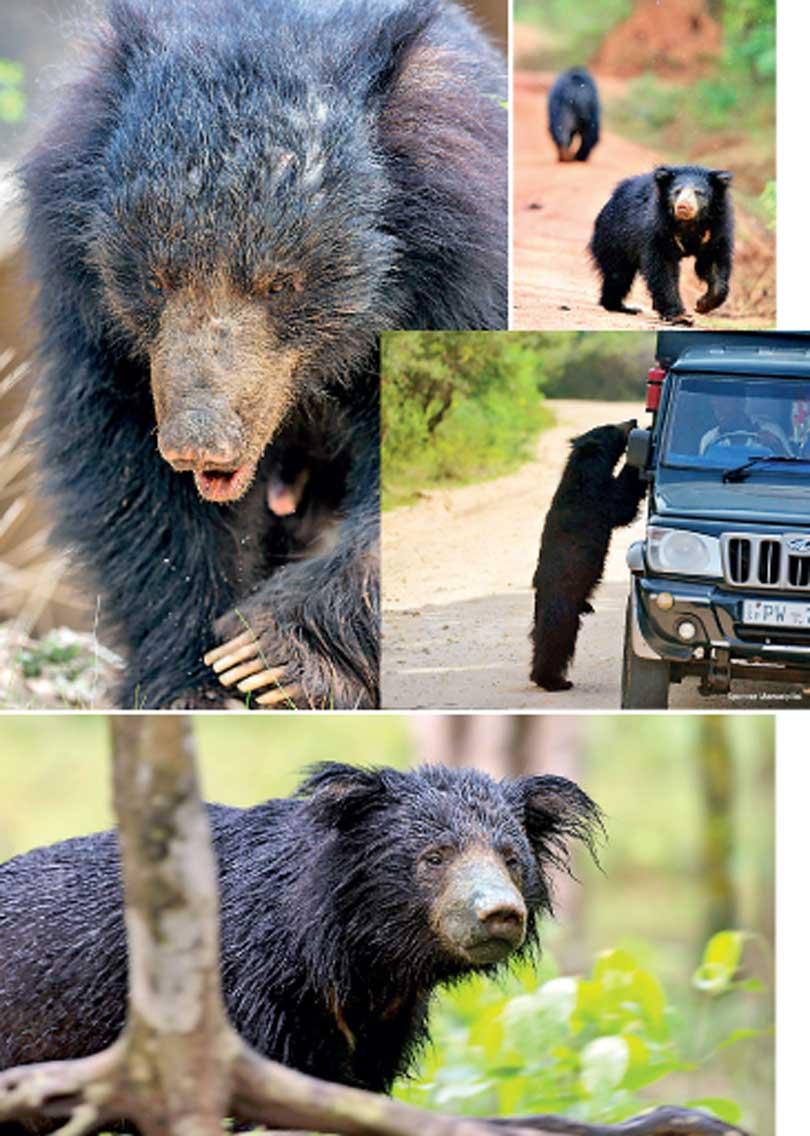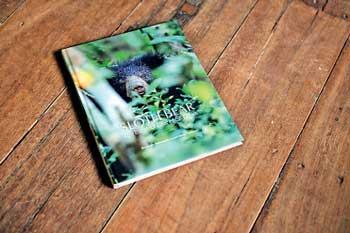19 Jul 2023 - {{hitsCtrl.values.hits}}

6 pm, 20th July, Jasmine Hall BMICH
 It seems strange that while elephants and leopards gain the major headlines, especially with regard to their desperate struggles for survival, another of Sri Lanka’s iconic big mammals, the Sloth Bear, is hardly ever written about. Probably the most endangered of the top three large terrestrial mammals, it is perhaps its elusiveness, predominantly nocturnal habits, and the relatively few resulting photographic opportunities that keeps it out of media pages. Of course, its rapidly reducing number will contribute to this visual scarcity, as well as the destruction of its natural habitat continues apace. There has also never been a comprehensive study undertaken, island-wide, to determine its actual population and distribution. However, based on some studies, their number is estimated to be less than 1,000 and maybe as low as 500.The Sloth Bear is one of four Asian varieties. Few environments in the world experience as much pressure from growing human populations and rapid economic development as tropical Asia. Not surprisingly, Asian bears are among the most threatened of the world’s bears. Their distribution range has declined drastically in the last five decades, placing all four species at risk of extinction in the near future.
It seems strange that while elephants and leopards gain the major headlines, especially with regard to their desperate struggles for survival, another of Sri Lanka’s iconic big mammals, the Sloth Bear, is hardly ever written about. Probably the most endangered of the top three large terrestrial mammals, it is perhaps its elusiveness, predominantly nocturnal habits, and the relatively few resulting photographic opportunities that keeps it out of media pages. Of course, its rapidly reducing number will contribute to this visual scarcity, as well as the destruction of its natural habitat continues apace. There has also never been a comprehensive study undertaken, island-wide, to determine its actual population and distribution. However, based on some studies, their number is estimated to be less than 1,000 and maybe as low as 500.The Sloth Bear is one of four Asian varieties. Few environments in the world experience as much pressure from growing human populations and rapid economic development as tropical Asia. Not surprisingly, Asian bears are among the most threatened of the world’s bears. Their distribution range has declined drastically in the last five decades, placing all four species at risk of extinction in the near future.
An unfounded reputation
Even though, in Sri Lanka, there are relatively few human-bear interactions in the wild, they have earned a fearsome, mostly unfounded, reputation especially amongst those populations living close to or in wilderness areas that they roam in. As with most wild animals on hearing the approach of humans, they melt into the trees away from confrontation and view. However, sloth bears have poor hearing and eyesight and if surprised, will rise onto its hind legs and slash out at its perceived assailant with its fearsome front claws. These leave horrible scars to a human’s face, neck and upper torso and it is stories of these rare encounters (between 2015 & 2019 just 10 were recorded) that has led to its overblown reputation (a female with cubs will attack if she perceives any danger to them.
In Sri Lanka, a sloth bear’s diet consists of insects and grubs, berries, nuts, roots, and any meat that they find as carrion or can scavenge off. They rarely kill other animals. As such, there was no real cause for conflict between human and bear. It has, and continues to be, encroachment into the bear’s natural habitat, usually the result of unplanned development, that has pushed this special creature to the brink of extinction in this country.
Saving a critically endangered species
To save any species, it is vital that a thorough, science-based knowledge is acquired on the behaviour, ecology and habits of that species. The Sloth Bear, perhaps more than any other, requires such dedicated study and in Dr. Shyamala Ratnayeke they have such a champion. From extensive field studies in many of the National Parks of Sri Lanka, to detailed academic analysis of her research findings, and the publication of numerous papers of the subject, there can be few else who has greater knowledge of this enigmatic creature. She has authored the publication of the book “Sloth Bear: the Barefoot Bear of Sri Lanka”, beautifully illustrated with the photographs of Luxshmanan Nadaraja, an essential addition to any who have interest in Sri Lanka Conservation, will be available at a discounted rate after
the lecture.
 Dr. Ratnayeke studies the ecology and conservation of two South-Asian bears, the Sloth Bear, and more recently, the sun bear. Dr. Ratnayeke is a former Fulbright Scholar and U.S. National Science Foundation International Research Fellow. She works with students and colleagues in Sri Lanka, Malaysia, the United Kingdom, and the United States with the goal of building capacity in wildlife ecology and conservation science.
Dr. Ratnayeke studies the ecology and conservation of two South-Asian bears, the Sloth Bear, and more recently, the sun bear. Dr. Ratnayeke is a former Fulbright Scholar and U.S. National Science Foundation International Research Fellow. She works with students and colleagues in Sri Lanka, Malaysia, the United Kingdom, and the United States with the goal of building capacity in wildlife ecology and conservation science.
In this lecture, Dr. Ratnayeke will discuss ecological, behavioural, and conservation concerns of sloth bears, synthesize findings from research conducted during the years of the civil conflict in Sri Lanka, and discuss potential ways forward. It certainly is a lecture not to be missed as well as the opportunity always afforded by the WNPS for attendees, at the end of the lecture, to informally discuss her work with her over a cup of tea.
The monthly lecture of the WNPS is supported by the Nations Trust Bank.
It is open to both members and non-members,
ENTRANCE FREE.
22 Nov 2024 6 hours ago
22 Nov 2024 8 hours ago
22 Nov 2024 9 hours ago
22 Nov 2024 22 Nov 2024
22 Nov 2024 22 Nov 2024